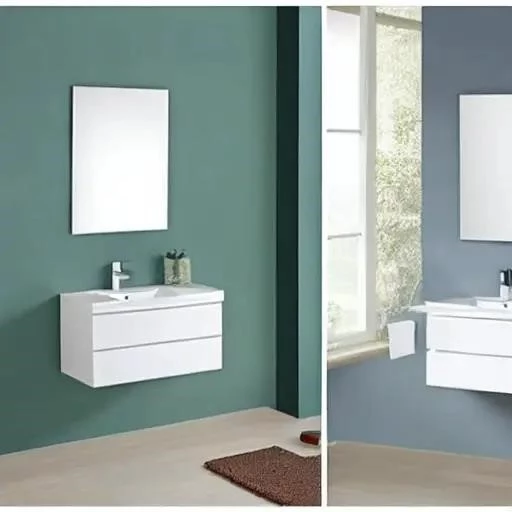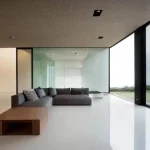Stepping into a home, one often anticipates a cohesive narrative, a design language spoken fluently from room to room. Yet, when it comes to the intimate sanctuaries we call bathrooms, a perplexing question frequently arises: should every single one echo the same design philosophy, or should each space boldly carve its own distinctive identity? This isn’t merely a matter of aesthetics; it’s a profound consideration of functionality, personal expression, and the overall harmony of your living environment.
The instinct to create visual continuity is undeniably strong, promoting a serene and unified flow throughout a property. However, an equally compelling argument exists for infusing each private oasis with its own unique character, responding to the specific needs and moods it serves. From the bustling family bathroom to the serene master en-suite, and even the often-overlooked powder room, navigating this design tightrope requires a nuanced understanding of materials, light, and, most importantly, personal vision. By integrating insights from leading industry experts and drawing upon innovative approaches, we can uncover the optimal path for your home’s most essential spaces.
| Design Approach | Key Philosophy | Benefits | Considerations | Reference / Expert |
|---|---|---|---|---|
| Consistent Harmony | Utilize similar design elements (color palettes, materials, vanity styles) across all bathrooms to create a unified home aesthetic. | Lends a sense of flow and balance; simplifies decision-making during renovation; elevates overall home value through perceived unity. | Risk of “generic” or “bed-in-a-bag” feel if executed without variation; may lack individual character for specific user needs. | Homes & Gardens |
| Personalized Uniqueness | Allow each bathroom to express its own distinct style, catering to its specific function or the personality of its users. | Adds excitement and bespoke character to the home; perfectly suits diverse needs (e.g., kids vs. master); avoids monotony. | Can feel “busy” or disconnected if no underlying cohesive thread is maintained; requires more design decisions. | Grazzie Wilson (Ca Pietra) |
| Cohesive Variation | Blend consistency with individuality by using similar materials in different sizes, layouts, or finishes, or maintaining a unified color scheme with varied textures. | Achieves both harmony and visual interest; elevates design sophistication; offers flexibility to highlight specific areas (e.g., shower focal point). | Requires thoughtful planning to ensure complementary elements rather than clashing styles; balance is key. | Katie Gisby (West One Bathrooms) |
On one side of this intriguing debate stands the compelling argument for cohesive design. A home where all bathrooms share similar foundational elements—perhaps the same style of vanity, a consistent color palette, or even identical flooring materials—can project an unparalleled sense of calm and considered elegance. This approach, far from being monotonous, often lends a remarkable sense of harmony and flow, making the entire living space feel intentionally curated. Imagine seamlessly transitioning from a laundry room with a particular tile to a guest bathroom featuring the same tile, simply reimagined in a different size or layout; this intelligent consistency is precisely what elevates a house into a truly unified home. It’s about creating a subtle yet powerful underlying rhythm that reassures and delights.
Conversely, the allure of personalization beckons powerfully, suggesting that each bathroom should, in fact, tell its own story. As design experts frequently attest, rigidly matching every element can sometimes lead to a ‘bed-in-a-bag energy’ – a generic, mass-produced feel that strips a home of its unique soul. Consider the distinct functional requirements: a child’s bathroom, demanding robust practicality and perhaps a playful aesthetic, vastly differs from a sophisticated, adult-only master en-suite, which might prioritize luxurious materials and serene ambiance. Even a compact powder room offers opportunities for bold, unexpected statements, diverging gracefully from the main bathroom’s theme. Embracing these differences allows for tailored experiences, transforming each space into a cherished reflection of its specific purpose and personality.
At the heart of this discussion, tiles emerge as a pivotal feature, offering both immense style potential and crucial practicality. ‘Bathroom tiles are one feature where you can make a real style statement that’s also incredibly practical,’ notes Homes & Gardens. The question of whether to match floor and wall tiles, or to daringly opt for contrasting designs, frequently arises. Grazzie Wilson, head of creative at Ca’ Pietra, beautifully articulates this dilemma: ‘There isn’t a correct answer or a firm yes or no.’ While ’tile drenching’—enveloping a space in a single tile design—can create a wonderfully cohesive atmosphere, especially with patterned or earthy tones as suggested by Carly Allison from Fired Earth, Wilson personally champions a mix. She advises adding interest by ‘mixing different shapes of the same marble’ or maintaining a ‘similar color palette’ while varying materials, cautioning against mixing more than three tile types without an intentionally eclectic vision. Crucially, functionality, particularly slip ratings for floors, must always precede aesthetic ambition.
For those seeking a middle ground—a harmonious blend of consistency and individual flair—the concept of cohesive variation offers an inspired solution. Katie Gisby, a respected designer at West One Bathrooms, brilliantly illustrates this approach: ‘I often design spaces where the same tile is used for both the floor and walls but in different finishes or formats.’ Imagine hexagonal tiles grounding the floor, while large-format versions of the identical material grace the walls, creating visual interest and depth without sacrificing unity. This ingenious strategy extends to using the same tile within a shower area, contrasting it with a different, complementary tile in the rest of the room, thereby enhancing the shower as a dramatic focal point. By subtly altering scale, texture, or application, designers can craft spaces that feel distinctly individual yet intrinsically connected, much like variations on a compelling musical theme.
Ultimately, the decision of whether your bathrooms should march in perfect unison or dance to their own rhythm rests firmly in your hands, guided by your personal preferences and the overarching vision for your home. There are no rigid rules, only boundless opportunities to express your unique taste. Whether you embrace a consistent style for serene harmony, opt for varied designs to inject exhilarating excitement, or master the art of cohesive variation for sophisticated balance, remember that the goal remains constant: to create spaces that are not only impeccably functional but also deeply reflective of your lifestyle and aspirations. So, go forth and design with confidence, knowing that a truly beautiful home is one that truly feels like yours.






